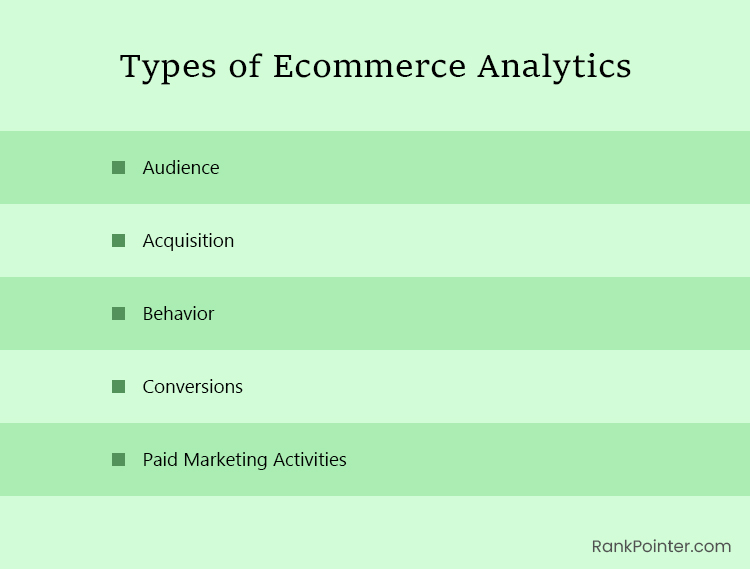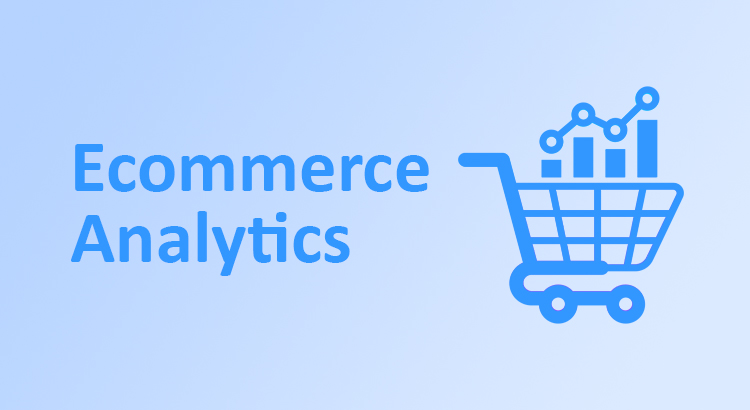Achieving results requires knowing your current performance, and making sales necessitates clear direction. Effective strategies depend on careful planning and learning from past efforts. Ecommerce analytics provides the data-driven insights needed for intelligent business decisions and future success.
Useful Article: Ecommerce Marketing: Strategies And Tools
What is Ecommerce Analytics?
Ecommerce analytics is the systematic process of gathering, analyzing, and interpreting data from various sources within an online retail business. This data provides insights into customer behavior, market trends, and the overall performance of the ecommerce store.
Benefits of Ecommerce Analytics
1. Measure the Effectiveness of Marketing and Sales Campaigns
Ecommerce analytics helps companies evaluate the success of their marketing efforts, improve decision-making, increase omnichannel traction, and inform comprehensive marketing programs.
2. Evaluate Trends and Forecast Accurately
By understanding current performance and predicting future outcomes, ecommerce analytics supports accurate forecasting. This informs hiring and sales goals and ensures the right products are available to meet customer expectations.
3. Optimize Pricing, Up-sell, and Inventory Performance
Ecommerce analytics provides a detailed view of pricing drivers for each consumer segment. This insight helps identify optimal product-level price points to maximize revenue.
4. Use Customer Data to Personalize Individual Experiences
Analyzing customer interactions enables businesses to tailor formats, content, and channels to resonate with target demographics. This improves product positioning and enhances the purchasing journey for customers.
5. Inform Strategy with Data-Driven Insights
Data-driven insights from ecommerce analytics offer a deep understanding of internal and industry trends. This helps businesses identify vital market trends and potential risks, shaping a more informed strategy.
Types of Ecommerce Analytics
1. Audience
Audience analytics provides in-depth insights into the demographics of your customers, including their gender, age, income, occupation, location, and language.
It also tracks the devices they use to access your store, whether mobile phones or desktops, and the specific platforms like Android or Apple.
This data helps tailor your marketing strategies, shipping options, and content to better align with your audience’s preferences and behaviors.
2. Acquisition
Acquisition analytics focuses on how visitors find your online store. It reveals which online marketing channels—such as social media, email campaigns, blog posts, or paid ads—are driving the most traffic and conversions.
Understanding these channels helps you allocate resources more effectively, maximizing the return on your marketing investments.
3. Behavior
Behavior analytics examines how visitors interact with your website. It answers questions like:
- What products do customers buy?
- How many visitors leave immediately versus exploring the site?
- What pages or content do visitors engage with first?
- Which products attract interest but few sales?
- How long do visitors stay on your site?
Analyzing these behaviors helps identify areas for improvement, such as reducing page load times, refining keyword targeting, and enhancing overall user experience to boost engagement and conversion rates.
4. Conversions
Conversion analytics explores the journey from visitor to paying customer. Key questions include:
- When and how do users convert?
- How long does it take for a user to become a customer?
- Are there repeat purchases, or do customers buy only once?
- What is the shopping cart abandonment rate?
This data is crucial for shaping marketing strategies, refining customer engagement, and developing effective discount and promotion plans that resonate with your audience.
5. Paid Marketing Activities
This type of analytics assesses the return on investment (ROI) from various paid marketing campaigns. It measures revenue generated from social media adverts, pay-per-click ads, and email marketing.
By evaluating these campaigns, you can determine which strategies are cost-effective and which need adjustment to avoid unnecessary spending.

Tips for Ecommerce Analytics Success
1. Set Your Objectives Beforehand
Clearly define your goals and objectives before analyzing data. Align these objectives with overall business goals and break them down into actionable steps. This ensures that your analytics efforts are focused and productive.
2. Establish Benchmarks
Use benchmarks to compare current performance against past data. This helps in setting realistic targets and understanding the impact of your strategies over time. Benchmarks can vary based on different campaigns or metrics.
3. Optimize Your Campaigns
Use analytics to continually tweak and optimize your marketing campaigns. Experiment with different variables and use simulations to identify the most effective resource allocation. This iterative approach helps improve overall performance.
4. Incorporate Data into Your Company’s Routine
Make data analysis a regular part of your business operations. Weekly check-ups on key metrics help identify bottlenecks and prioritize actions. Consistently integrating data-driven insights into decision-making processes can significantly enhance business performance.
Ecommerce Analytics Tools
Google Analytics
Google Analytics provides in-depth insights into website performance and customer behavior, focusing on metrics like bounce rate, sessions, and conversions, offering valuable data for traffic attribution and user engagement analysis.
Optimizely
Optimizely facilitates personalized shopping experiences through A/B testing and experimentation, driving higher conversion rates and fostering customer satisfaction.
Woopra
Woopra tracks real-time customer analytics across various channels, enabling businesses to understand and optimize the entire sales funnel, with advanced segmentation and individual customer profiles.
Crazy Egg
Crazy Egg offers visually engaging tools like “confetti” and heat maps to analyze customer interactions, providing actionable insights for improving conversion rates and optimizing web design elements.
Adobe Analytics
Adobe Analytics caters to enterprise-level businesses, capturing detailed customer data to predict trends and optimize marketing strategies across multiple channels, ensuring smarter investments and better customer engagement.
Closing Thoughts on Analytics in Ecommerce
Ecommerce analytics is essential for understanding and improving various aspects of an online retail business. By leveraging detailed data insights, companies can make informed decisions, optimize their strategies, and enhance customer experiences, ultimately driving growth and profitability.


